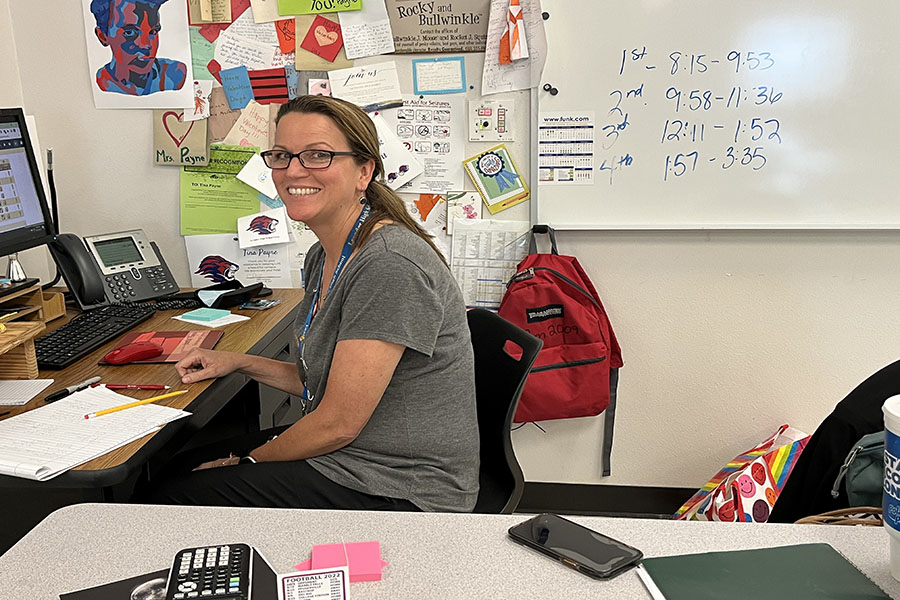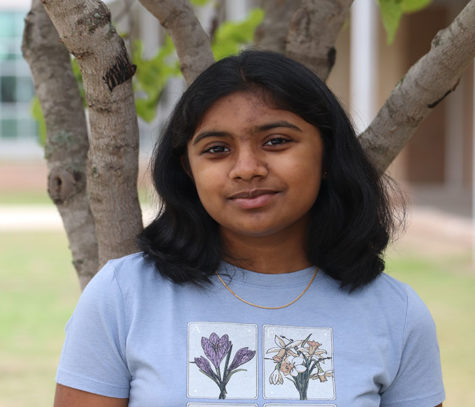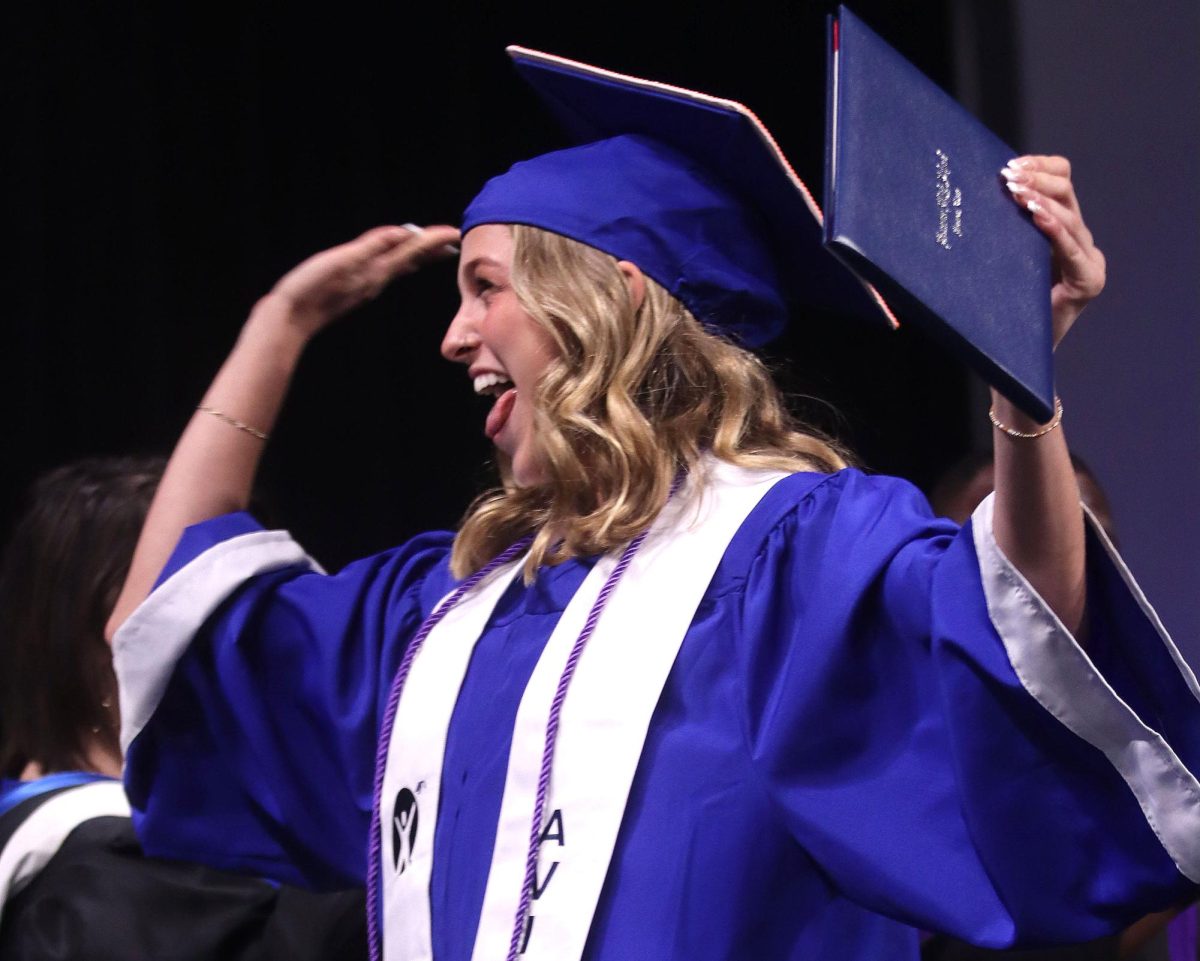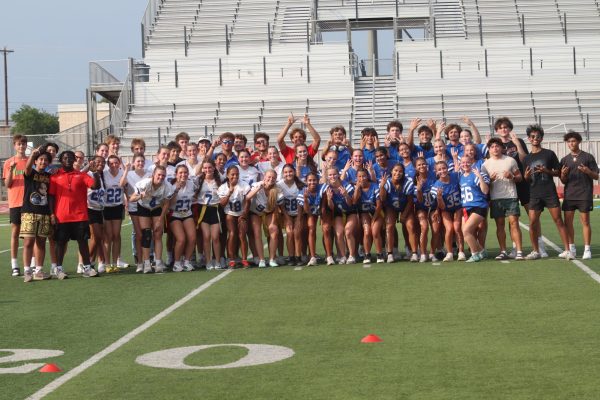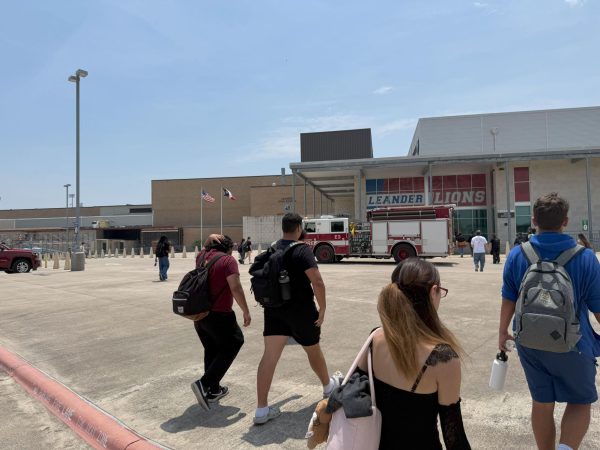Over the Moon for FISE
Physics teacher Tina Payne explains her work with NASA.
Physics teacher Tina Payne
September 27, 2022
In an upstairs classroom in the science wing, where the desk surfaces have been replaced with whiteboards and the teacher’s desk is cluttered with papers, computer screens and art, tacked up just behind the desk chair, physics teacher Tina Payne wraps up class on the last day of school. But unlike most other teachers, Payne isn’t finished teaching when the bell rings.
For the past three years, Payne has worked with the Foundation for International Space Education (FISE) on a NASA summer program for international students.
“We have students from 16 different countries,” Payne said. “It’s a two-week process and they basically design and model a plan for how to get to Mars and what they’re going to do there.”
Students go through a selection process before they are accepted to the program.
“Each country selects the students,” Payne said. “The students fill out an application and they figure out who they want. Each country then sends those students to the FISE board and the board accepts them or not.”
The students in the program are then divided into five teams, one for each essential part of a mission to Mars.
“The gold team is in charge of the budget,” Payne said. “The red team is in charge of the rocket, the maroon team’s in charge of the propulsion, the blue team is in charge of the health of the astronauts and then our green team is in charge of the environment once they’re there. It’s two weeks of intense ‘How do I get to Mars safely, get what I need and come back home?’”
Each year, the students get to meet people who are either working in space exploration now, or have done so in the past.
“The kids get to meet some really, really amazing people that are in space right now,” Payne said. “They might not be actual astronauts all the time, but they’re the people that work on the spaceships, they work with the astronauts and stuff. This year we got to meet Chris Hadfield, an astronaut from Canada, George Abbey, who is actually the founder of FISE, and he used to run the Johnson Space Center. We [also] got to see the astronauts for Artemis this year, which was really cool.”
Because the students in the program are from all around the world, they host a culture night.
“The students prepared food from their countries and shared it with everyone as well as doing a performance of some type from their country,” Payne said. “This is a really cool part of international space school and allows all students a view into another person’s culture.”
Payne also said that the students experience culture shock during their time in America.
“Most of the students visiting are surprised by what we eat in the US, like how orange Cheetos are,” Payne said. “Most students also had a hard time with the ‘hot’ summers in Houston.”
When the program went virtual during the pandemic, the culture fair was one of the things that had to change.
“Students still did the culture fair, and took videos around town to show off where they lived and what it was like at that time, like winter in New Zealand,” Payne said. “But instead of a mission to Mars, the teams planned missions to figure out which asteroids and meteors to mine. Each team worked independently of the others due to time differences. People from New Zealand and Canada had about a 17 hour difference and couldn’t be in the same group. Our virtual meeting had odd hours depending on your country and that made it a little more difficult for collaboration. It was fun for the students but it’s not the same experience as seeing everyone in person.”
Payne said she only has one regret about the program.
“I wish more students from here would apply,” Payne said. “We haven’t had any from Leander yet. Just throwing that out there.”


